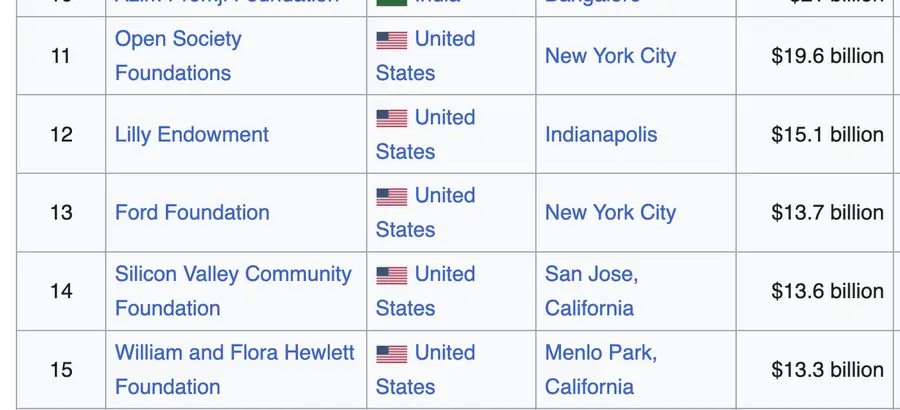NVIDIA was founded in 1993 by Jensen Huang, Chris Malachowsky, and Curtis Priem. Six years later, on January 22, 1999, the company went public. At the end of the trading day at IPO, NVIDIA's market cap was $550 million.
Over the next several years, NVIDIA's stock rose steadily as its graphics processors became the standard for high-performance PC gaming. The company's market cap topped $1 billion in January 2000, doubled a few months later, and reached about $3.5 billion before the dot-com bubble burst. In early 2002, after briefly nearing $7 billion in value, NVIDIA's momentum stalled amid the broader tech crash and an SEC inquiry into its accounting practices. A slowdown in PC demand and a poorly timed product transition further dented investor confidence. By September 2002, NVIDIA's market cap had plunged to roughly $870 million. The company gradually regained its footing thanks to new GPU architectures, growing demand for 3D gaming, and major console partnerships with Microsoft's Xbox and Sony's PlayStation 3. By 2004, NVIDIA had stabilized around the $2–3 billion range, and by 2006, it surged past $10 billion for the first time. In mid-2007, the company's value reached roughly $15 billion, cementing its dominance in graphics technology.
With NVIDIA thriving once again and its stock climbing to new highs, in the middle of 2007, Jensen Huang and his wife, Lori, began reflecting on how to use their wealth for a greater purpose. So, that summer, they established the Jen-Hsun and Lori Huang Foundation. They seeded their foundation with an initial donation of 370,000 NVIDIA shares. At the time (before several future stock splits), those shares were worth $12.6 million.
Compared to the multi-billion-dollar Silicon Valley foundations launched with Hewlett-Packard, Intel, eBay, Dell, and Google fortunes, $12.6 million was a pittance. Probably not enough to cover salaries at Bill & Melinda Gates' $33 billion foundation.
Fast forward to today, and, as you may have heard, NVIDIA is no longer a niche gaming graphics card company. It's the most valuable company in the world with a market cap that just crossed $5 trillion today. Along the way, the Jen-Hsun and Lori Huang Foundation has grown from a modest little charity no one had heard of, into something much, much, much, much bigger.
Here's a photo of Jensen with his family in May 2007, right around the time they established their foundation (from left to right, daughter Madison, wife Lori, Jensen, and son Spencer):

Jensun with his family, Madison, Lori, and Spencer in 2007 (Thu Hoang Ly/Mercury News) (Photo by MediaNews Group/The Mercury News via Getty Images)
From Modest Gift To Mega Foundation
To reiterate, the Jen-Hsun and Lori Huang Foundation was quietly seeded in 2007 with a donation of 370,000 NVIDIA shares, then worth around $12.6 million.
As you know, over the next 17 years, but especially in the last few years, NVIDIA's stock has gone absolutely parabolic. During that period, the company executed three stock splits, turning the Huangs' original 370,000 shares into roughly 14.8 million today. At NVIDIA's current $5 trillion market capitalization, that initial donation alone would be worth $3.1 billion—enough to rank the foundation among the 50 largest in the world. But wait. There's more!
The Huangs have continued to add to their foundation's holdings over the years. In June 2025, for example, they contributed another 440,000 shares, valued at approximately $60 million at the time of transfer.
According to its latest filing, as of the end of 2023, the foundation held 68.5 million shares of NVIDIA. If you add the 440,000 shares from the June 2025 transfer, it's probably safe to call it 69 million today. At today's $5 trillion valuation, those 69 million shares are now worth around…
$14.35 billion
That's enough to rank the Jen-Hsun and Lori Huang Foundation as the 12th largest charitable foundation on the planet, ahead of the Ford Foundation ($13.7 billion) and below the Lilly Endowment ($15.1 billion).
Yet if you look at Wikipedia's ranking of the world's largest foundations, you will not find the Jen-Hsun and Lori Huang Foundation listed. Not between Ford and Lilly. Not lower in the rankings with an outdated number. The foundation is not listed at all. The reason is simple: the Jen-Hsun and Lori Huang Foundation keeps a remarkably low profile. It has no website, no public address, and no digital footprint beyond mandatory filings. A LinkedIn search for employees turns up nothing. For comparison, the Ford Foundation employs 423 full-time people. The Gates Foundation employs over 2,000 people. The Jen-Hsun and Lori Huang Foundation? Employs ZERO people.

Where the Money Is Going
Like many modern tech philanthropists, the Huangs have relied heavily on donor-advised funds (DAFs) as an initial vehicle for giving. In 2023, roughly 77% of the foundation's disbursements—about $46 million—went to a Schwab-managed DAF. These accounts are popular among wealthy donors because they allow for an immediate tax deduction while postponing the actual deployment of funds. DAFs are not required to distribute assets on any schedule and are not obligated to publicly disclose where their eventual grants go, which makes them a convenient but opaque tool for large-scale philanthropy.
The Huangs have also made several major direct gifts from their foundation. In 2022, they pledged $50 million to Oregon State University, their alma mater, to fund a new research and education complex. In early 2025, they announced a $22.5 million grant to the California College of the Arts, aimed at strengthening the school's endowment and academic programs. Other public records show additional support for institutions like Stanford University and select community and mental health organizations.
As the foundation's assets continue to grow, so too will the required level of annual giving. U.S. law mandates that private foundations distribute at least 5% of their assets each year, whether through direct grants or DAF contributions. Based on the company's 2024 average market cap, the foundation likely had to distribute around $350 million this year to meet its 5% minimum. Assuming NVIDIA maintains its current $5+ trillion market cap, next year the foundation will be required to distribute $700 million!
For most tech billionaires, philanthropy is a stage performance — press releases, summits, and splashy initiatives. For Jensen and Lori Huang, it's a quiet calculation. Their foundation has no fanfare, yet it now rivals the largest charitable endowments on earth. And all of it traces back to a single 2007 stock donation that grew — like NVIDIA itself — beyond anything Silicon Valley could have imagined.
BTW, What Happened To His Co-Founders?
If you recall the first sentence of this article: "NVIDIA was founded in 1993 by Jensen Huang, Chris Malachowsky, and Curtis Priem." When NVIDIA went public:
- Jensen owned 15% of the company
- Chris owned 10%
- Curtis owned 12.8%
Today, Jensen owns 3.5% of NVIDIA, which at today's $5 trillion market cap, gives him a net worth of $175 billion. He is the #8 richest person on earth.
Chris Malachowsky still works at the company, holding the title of NVIDIA Fellow and remaining deeply involved in research and high-performance computing initiatives. His net worth is not known, but he is not a confirmed billionaire. If he still owned his 10% stake, today he would be worth $500 billion.
Curtis Priem walked away two decades ago and proceeded to give nearly all of his fortune to his alma mater, Rensselaer Polytechnic Institute. After transferring most of his NVIDIA stock to a charitable foundation in 1999, Priem went on to donate more than $275 million to RPI—including a $40 million performing-arts center that bears his name and a $95 million pledge to bring an IBM Quantum System One computer to campus. At one point, he owned 12.8% of NVIDIA. If he still owned that much, today he would be worth $650 billion. According to a November 2023 Forbes profile of Curtis, at that point, he was worth around $30 million.
/2018/10/Jensen-Huang.jpg)
/2024/06/jensen-1.jpg)
/2025/07/Larry-Ellison.jpg)
/2025/06/larry-bill.jpg)
/2024/01/GettyImages-1445820458.jpg)
/2023/05/GettyImages-902419318.jpg)
/2019/10/denzel-washington-1.jpg)
/2019/04/rr.jpg)
/2009/11/George-Clooney.jpg)
/2019/11/GettyImages-1094653148.jpg)
:strip_exif()/2009/09/P-Diddy.jpg)
/2020/02/Angelina-Jolie.png)
/2009/09/Jennifer-Aniston.jpg)
/2009/09/Brad-Pitt.jpg)
/2020/04/Megan-Fox.jpg)
/2020/06/taylor.png)
/2009/09/Cristiano-Ronaldo.jpg)
/2017/02/GettyImages-528215436.jpg)
/2018/03/GettyImages-821622848.jpg)
/2020/01/lopez3.jpg)
:strip_exif()/2015/09/GettyImages-476575299.jpg)